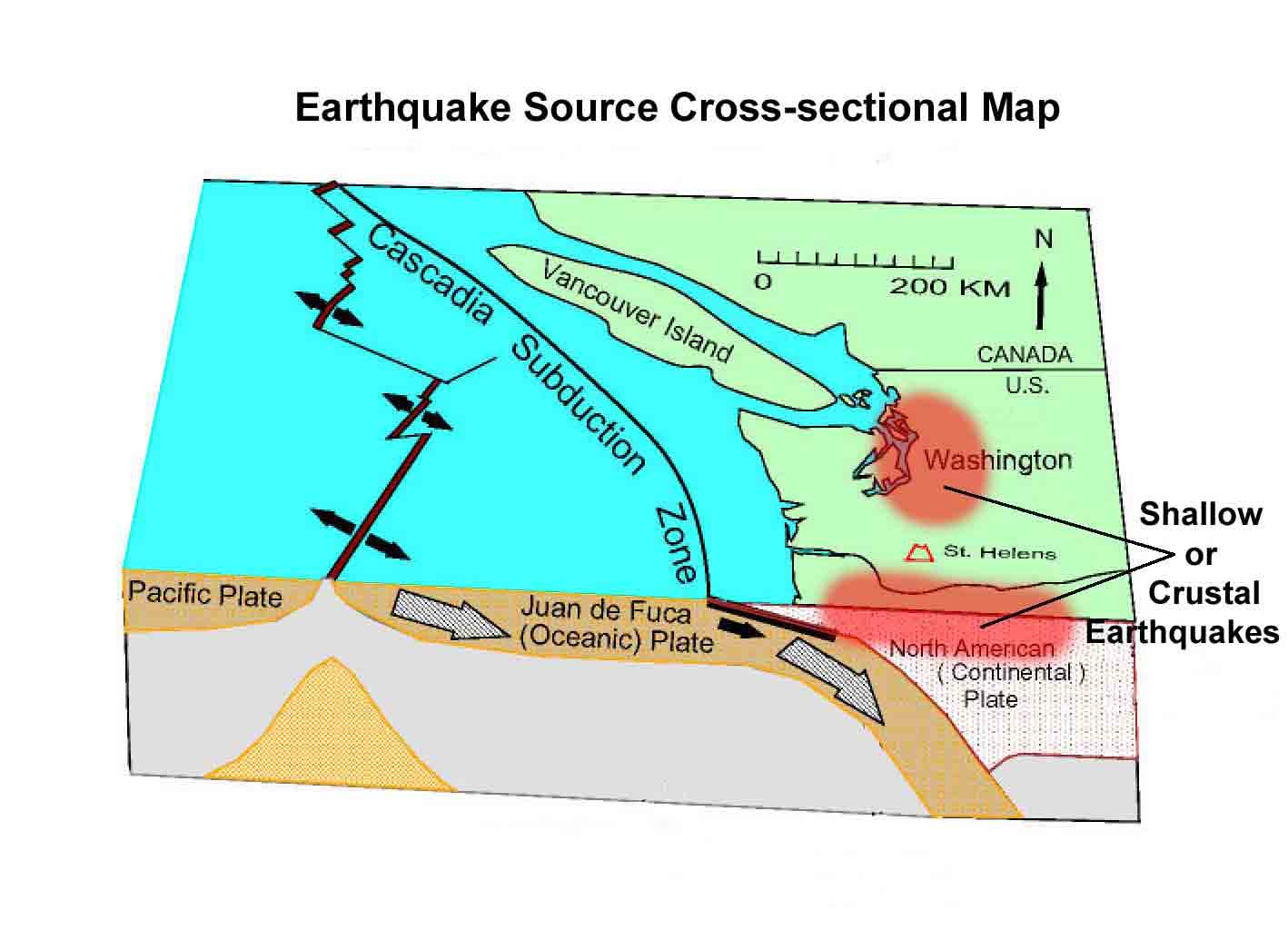Virtual
Tour > Intro > What Causes an EQ > How we locate EQ's > Equipment > Volcanoes > The End!
Shallow Crustal Faults
 |
The final area which produces
earthquakes are the shallow crustal faults. These
are shallow faults that occur at the very top of the
earth's crust (less than a kilometer deep) right up near
the surface. These kinds of earthquakes are potentially
the most damaging to the uban areas of the Puget Sound
because the movement occurs right
at the surface underneath areas of major population.
This means that the shock waves do not
get dampened as they travel through the rock. Also,
due to the shallowness of the fault, ruptures can occur
right at the surface, causing massive damage. |
| These types of earthquakes
are potentially the biggest threat to the Seattle
area. The biggest and potentially most dangerous fault
is the Seattle fault, which runs right underneath
Seattle where the Kingdome used to be and west underneath
the water out to Bainbridge Island and east out to
Issaquah. The last time this fault ruptured was about
1100 years ago causing great transformations in the
landscape of the area. |
|
|
| We can see in this picture taken through
a technique called Lidar, evidence of the uplift caused
by the quake that happened 1100 hundred years ago. We
can also see the fault
scarp created by the sliding of rocks past each other. |
| Here we can see what the uplift
actually looks like today. This is a place called Restoration point located on Bainbridge island, right
across the water from Seattle (in the background). The flat area between the
trees and the water is the area uplifted by the last earthquake. |
 |
To learn more about shallow crustal faults,
click here.
Next>>>
|
|